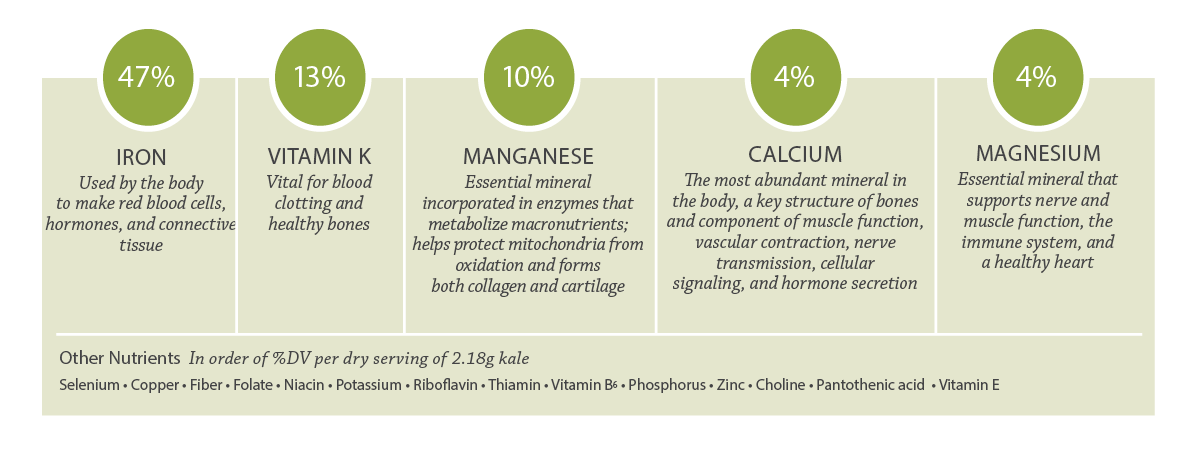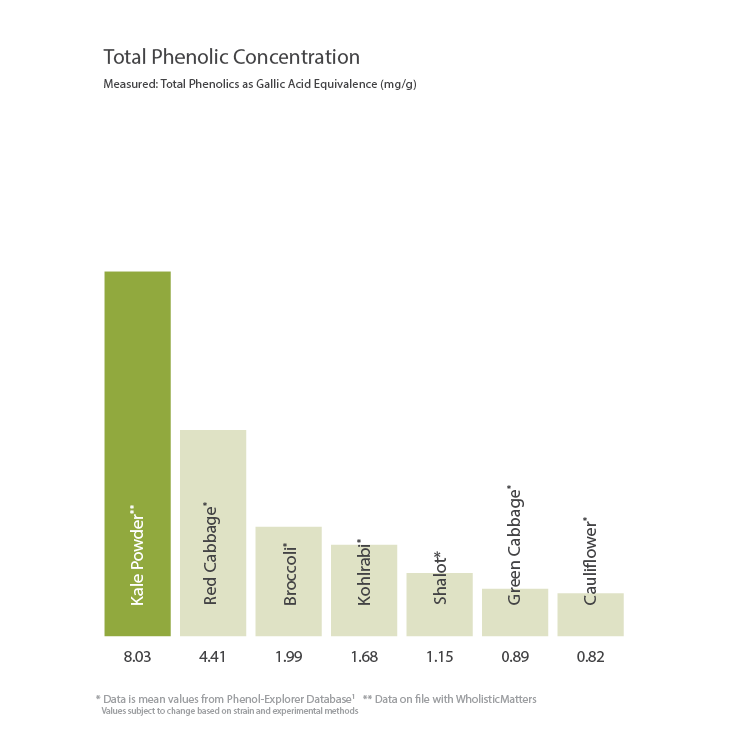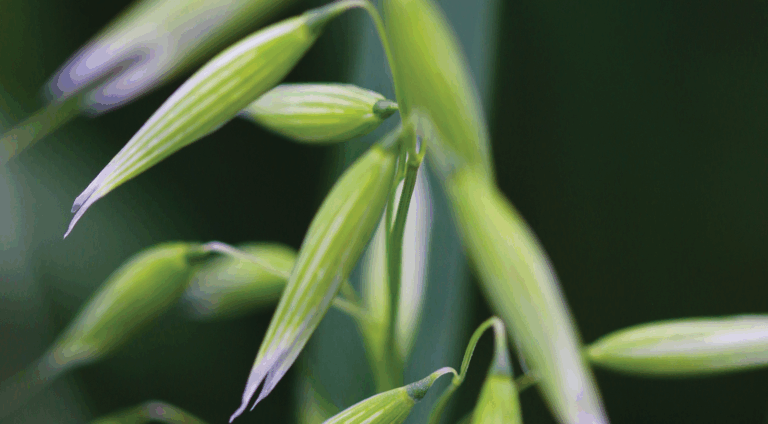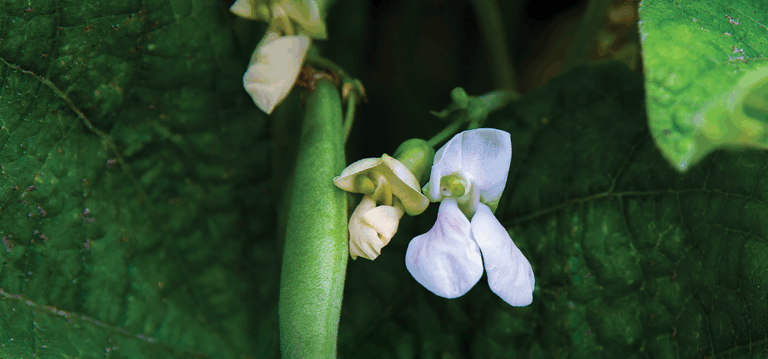Kale: Whole Food Profile
Kale (Brassica oleracea var. viridis L) is a cruciferous vegetable associated with production of detoxification enzymes, antioxidant properties, cardiovascular protection, and anti-carcinogenic activity. Kale is a staple vegetable in healthy diets that contain glucosinolates and a concentrated punch of essential nutrients.
Key Nutrients in Kale
Percentages shown as %DV per dry serving of 2.18g kale.

Total Phenolic Concentration in Kale
Measured: Total Phenolics as Gallic Acid Equivalence (mg/g).

Phytoactives in Kale
Carotenoids
Antioxidants with anti-cancer potential and may lower risk of macular degeneration
- Beta-carotene(4.626 mcg/g)**
- Lutein (38.4 mcg/g)**
Supports exercise performance and cardiovascular health
Chlorophyll
Green pigment in plants with potential anti-inflammatory, antioxidant, and anti-bacterial activity
Fiber
Supports cardiovascular health, healthy bowel function, and healthy cholesterol levels
Lignans
Large plant polyphenolic compounds that bypass human digestion, feed gut bacteria, and provide antioxidant activity
- Pinoresinol(1.691 mcg/g)*
- Lariciresinol (0.599 mcg/g)*Secoisolariciresinol(0.019 mcg/g)*
- Matairesinol(0.012 mcg/g)*
Myrosinase
Enzyme found in plant tissue that initiates conversion of glucosinolates to bioactive isothiocyanates
Glucosinolates
Sulfur-containing secondary metabolites mostly found in cruciferous vegetables, when activated by myrosinase from the plant or after ingestion by gut bacteria, associated with positive effects stemming from antioxidant activity such as cardio-protection and detoxification support
- Gluconapin(0.22454 mg)**
- Glucoraphasatin (0.0718 mg)**
- Glucobrassicin (0.03981 mg)** 4-MeOH Glucobrassicin (0.02589 mg)**
- Glucoerucin(0.00298 mg)**
- Neoglucobrassicin (0.1153 mg)**
- Glucoraphanin (0.06072 mg)**
- Glucobrassicanapin(0.02884 mg)**
- Sinigrin (0.00356 mg)**
Flavonols
Promote antioxidant activity and vascular health
- Kaempferol (267.4 mcg/g)*
- Quercetin(77.1 mcg/g)*
*Data is mean values from Phenol-Explorer Database1
**Data on file with WholisticMatters. Values subject to change based on strain and experimental methods
Did you know WholisticMatters is powered by Standard Process? Learn more about Standard Process’ whole food-based nutrition philosophy.
Rothwell, J.A., et al., Phenol-Explorer 3.0: a major update of the Phenol-Explorer database to incorporate data on the effects of food processing on polyphenol content. Database, 2013. 2013: p. bat070-bat070.




